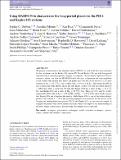Files in this item
Using HARPS-N to characterize the long-period planets in the PH-2 and Kepler-103 systems
Item metadata
| dc.contributor.author | Dubber, Sophie C. | |
| dc.contributor.author | Mortier, Annelies | |
| dc.contributor.author | Rice, Ken | |
| dc.contributor.author | Nava, Chantanelle | |
| dc.contributor.author | Malavolta, Luca | |
| dc.contributor.author | Giles, Helen | |
| dc.contributor.author | Coffinet, Adrien | |
| dc.contributor.author | Charbonneau, David | |
| dc.contributor.author | Vanderburg, Andrew | |
| dc.contributor.author | Bonomo, Aldo S. | |
| dc.contributor.author | Boschin, Walter | |
| dc.contributor.author | Buchhave, Lars A. | |
| dc.contributor.author | Cameron, Andrew Collier | |
| dc.contributor.author | Cosentino, Rosario | |
| dc.contributor.author | Dumusque, Xavier | |
| dc.contributor.author | Ghedina, Adriano | |
| dc.contributor.author | Harutyunyan, Avet | |
| dc.contributor.author | Haywood, Raphaelle D. | |
| dc.contributor.author | Latham, David | |
| dc.contributor.author | López-Morales, Mercedes | |
| dc.contributor.author | Micela, Giusi | |
| dc.contributor.author | Molinari, Emilio | |
| dc.contributor.author | Pepe, Francesco A. | |
| dc.contributor.author | Phillips, David | |
| dc.contributor.author | Piotto, Giampaolo | |
| dc.contributor.author | Poretti, Ennio | |
| dc.contributor.author | Sasselov, Dimitar | |
| dc.contributor.author | Sozzetti, Alessandro | |
| dc.contributor.author | Udry, Stéphane | |
| dc.date.accessioned | 2019-12-20T11:30:02Z | |
| dc.date.available | 2019-12-20T11:30:02Z | |
| dc.date.issued | 2019-12 | |
| dc.identifier | 264574534 | |
| dc.identifier | dfdb2751-dc3a-4611-9425-1eeec4ae7cf4 | |
| dc.identifier | 85079628965 | |
| dc.identifier | 000504000300048 | |
| dc.identifier.citation | Dubber , S C , Mortier , A , Rice , K , Nava , C , Malavolta , L , Giles , H , Coffinet , A , Charbonneau , D , Vanderburg , A , Bonomo , A S , Boschin , W , Buchhave , L A , Cameron , A C , Cosentino , R , Dumusque , X , Ghedina , A , Harutyunyan , A , Haywood , R D , Latham , D , López-Morales , M , Micela , G , Molinari , E , Pepe , F A , Phillips , D , Piotto , G , Poretti , E , Sasselov , D , Sozzetti , A & Udry , S 2019 , ' Using HARPS-N to characterize the long-period planets in the PH-2 and Kepler-103 systems ' , Monthly Notices of the Royal Astronomical Society , vol. 490 , no. 4 , pp. 5103–5121 . https://doi.org/10.1093/mnras/stz2856 | en |
| dc.identifier.issn | 0035-8711 | |
| dc.identifier.other | ArXiv: http://arxiv.org/abs/1910.03518v1 | |
| dc.identifier.other | ORCID: /0000-0002-8863-7828/work/66398286 | |
| dc.identifier.uri | https://hdl.handle.net/10023/19175 | |
| dc.description | Funding: Senior Kavli Institute Fellowships at the University of Cambridge (AM); UK Science & Technology Facilities Council (STFC) consolidated grant number ST/R000824/1 (ACC). | en |
| dc.description.abstract | We present confirmation of the planetary nature of PH-2b, as well as the first mass estimates for the two planets in the Kepler-103 system. PH-2b and Kepler-103c are both long-period and transiting, a sparsely populated category of exoplanets. We use Kepler light-curve data to estimate a radius, and then use HARPS-N radial velocities to determine the semi-amplitude of the stellar reflex motion and, hence, the planet mass. For PH-2b we recover a 3.5σ mass estimate of Mp=109+30−32 M⊕ and a radius of Rp = 9.49 ± 0.16 R⊕. This means that PH-2b has a Saturn-like bulk density and is the only planet of this type with an orbital period P > 200 d that orbits a single star. We find that Kepler-103b has a mass of Mp,b=11.7+4.31−4.72 M⊕ and Kepler-103c has a mass of Mp,c=58.5+11.2−11.4 M⊕. These are 2.5σ and 5σ results, respectively. With radii of Rp,b=3.49+0.06−0.05 R⊕ and Rp,c=5.45+0.18−0.17 R⊕, these results suggest that Kepler-103b has a Neptune-like density, while Kepler-103c is one of the highest density planets with a period P > 100 d. By providing high-precision estimates for the masses of the long-period, intermediate-mass planets PH-2b and Kepler-103c, we increase the sample of long-period planets with known masses and radii, which will improve our understanding of the mass–radius relation across the full range of exoplanet masses and radii. | |
| dc.format.extent | 19 | |
| dc.format.extent | 4907545 | |
| dc.language.iso | eng | |
| dc.relation.ispartof | Monthly Notices of the Royal Astronomical Society | en |
| dc.subject | Techniques: photometric | en |
| dc.subject | Techniques: radial velocities | en |
| dc.subject | Techniques: spectroscopic | en |
| dc.subject | Planets and satellites; composition | en |
| dc.subject | QB Astronomy | en |
| dc.subject | QC Physics | en |
| dc.subject | NDAS | en |
| dc.subject.lcc | QB | en |
| dc.subject.lcc | QC | en |
| dc.title | Using HARPS-N to characterize the long-period planets in the PH-2 and Kepler-103 systems | en |
| dc.type | Journal article | en |
| dc.contributor.sponsor | Science & Technology Facilities Council | en |
| dc.contributor.institution | University of St Andrews. School of Physics and Astronomy | en |
| dc.contributor.institution | University of St Andrews. St Andrews Centre for Exoplanet Science | en |
| dc.identifier.doi | https://doi.org/10.1093/mnras/stz2856 | |
| dc.description.status | Peer reviewed | en |
| dc.identifier.grantnumber | ST/R00824/1 | en |
This item appears in the following Collection(s)
Items in the St Andrews Research Repository are protected by copyright, with all rights reserved, unless otherwise indicated.

